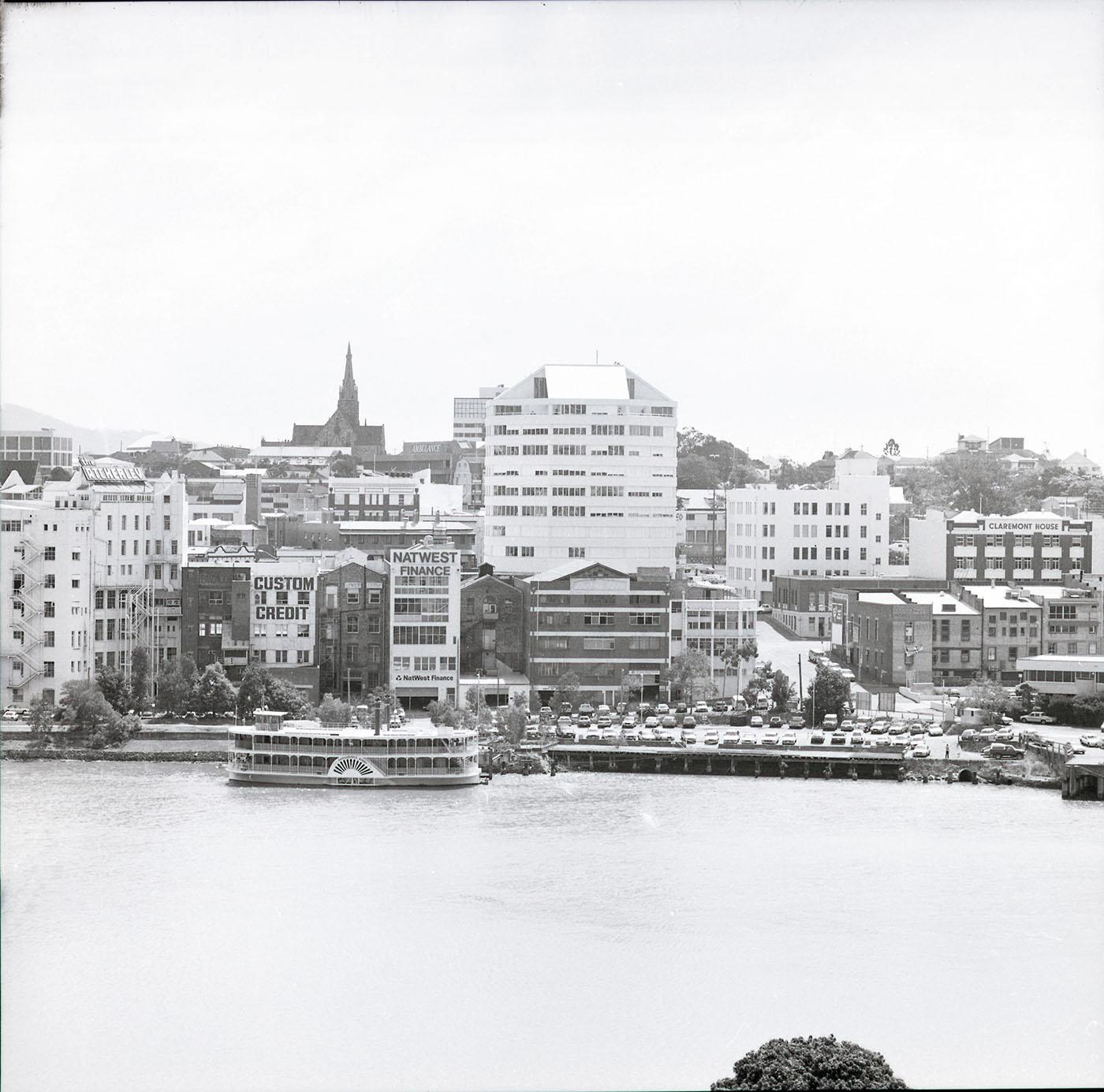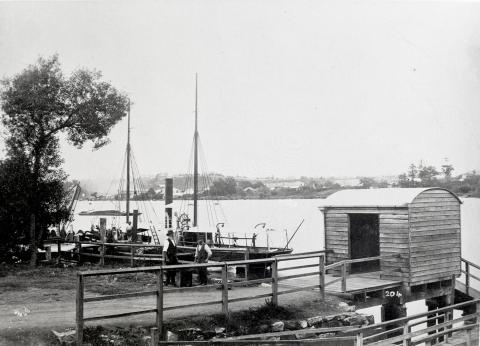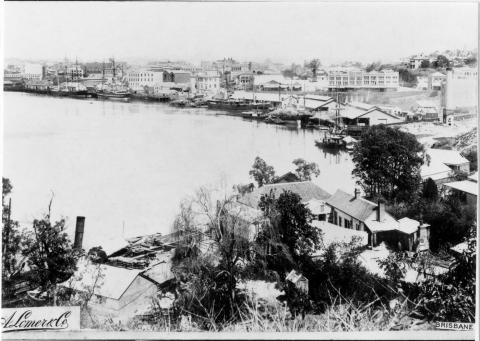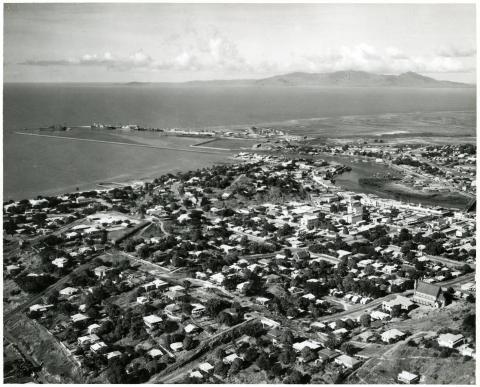
- News of the day
-
Sydney Morning Herald 27 May 1989, page 3
Queensland's way to be well-heeled - and toad
BRISBANE: Ever wondered how many cane toads it takes to make a pair of shoes, or how many barramundi have to be stitched together for a genuinely fishy evening gown?
You need eight large toads for the shoes, 12 for a handbag and one for a key-holder.
Or one large (or two small) toads to make up a wallet. For the evening gown, you are looking at about 50 barramundi.
- Background
-
Petrie Bight is a reach of the Brisbane River in Brisbane, Queensland, Australia. The small pocket of land to the north of the bight, centred on the area under the Story Bridge's northern point and around the Brisbane River to Customs House is also known as Petrie Bight; it falls within the suburbs of the Brisbane CBD and Fortitude Valley. However, land to the south of the reach Petrie Bight does not use that name, and is known by its suburb name of Kangaroo Point.
Petrie Bight is a sharp curve in the Brisbane River at the northern ends of the Town Reach (upstream) and the Shafston Reach (downstream) around the tip of Kangaroo Point. The name is derived from the association of the area with early Brisbane builder Andrew Petrie, who c. 1838 established his workshop and residence at the corner of Wharf and Queen Streets.
The location was known to the Turrbal people as Mianjin or Meeanjin in the Yaggera language, and this name has more recently been used as the traditional name for Brisbane more generally, as well as its traditional owners and custodians.
The location was known to white settlers as Petrie Gardens and was the location of an early settlement farm, one of two that provided food for the colony. The site was named after Andrew Petrie and has been the base for water police and in earlier times wharves. The location of Customs House and the preference for wharves was due to site being directly downstream from the central business district.
Surveyor Henry Wade, on his 1844 Map of the Environs of Brisbane Town, identified the Petrie's Bight area south of Boundary Street and east of Queen Street as "Reserved for Dry Dock". Surveyor Galloway did the same on his 1856 Plan of the Suggested Extension of the Town of Brisbane. At this time the surrounding area was sparsely occupied, with Andrew Petrie's house and factory at the corner of Wharf and Queen Streets; Dr Hobbs' house (now St John's Deanery) a little further north in Adelaide Street; the original Customs House in Queen Street, beside the Brisbane River; and a ferry jetty just north of the Customs Houses.
A c. 1860 map of Brisbane Town showing the new town boundaries no longer labelled Petrie's Bight as a reserve for a dry dock (no dry dock was ever established there), but the site remained unsurveyed Government land. An early track (the northern end of Queen Street) ran through this land, branching off in three directions to New Farm, Fortitude Valley and the northwest end of Spring Hollow.
Under the provisions of the Brisbane Gas Company Bill 1864 the Queensland Government granted to the Company a site bounded by what are now Ann, Boundary and Macrossan streets and a 160-metre frontage to the Brisbane River, as the site for Brisbane's first gas works. This was the northern half of the Government land at Petrie's Bight. Gas production commenced there in 1865, providing the Brisbane Municipal Council with a regular supply of gas for street lighting. By the early 1870s the demand for gas for domestic consumption was outstripping supply, and in the mid-1870s a second gasometer was constructed on the site. In 1873 the Brisbane Gas Company gained a formal deed of grant to the Petrie's Bight land, an area of 4 acres 17.5 perches (1.66ha), which the Company had purchased from the Government in May 1873 for £4,300.
An April 1873 a survey plan titled Survey of Site of Gas Works and Adjacent Crown Land Shewing Road Through Same indicates that by this date the gas works site was fenced along the entire length of its land boundaries, but that through this the government had just surveyed a 20 feet wide road between Macrossan and Boundary streets, which later became an extension of Adelaide Street. Photographs from the 1860s and early 1870s show a tall paling fence around the perimeter of the gas works, prohibiting public access.
Courtesy of Wikipedia
/153.0347137,-27.4650726,7/450x450@2x.png?access_token=pk.eyJ1IjoicXNhLWRpc2NvLXFsZCIsImEiOiJjamJmdTgyZXEyeWNjMnlxZm8xcmtieHgxIn0.lmT9J5tTPKGuuccQgCVSAg)



